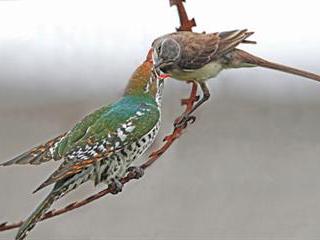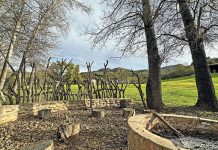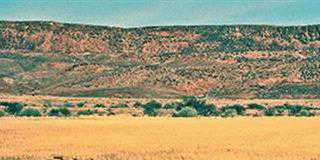
When I was a young boy, my father built me a pigeon loft, complete with perches and nesting boxes. Through friends, he collected a sizeable flock of scruffy-looking, mixed-breed city pigeons and promised that we would breed champions from them. Although sceptical, I believed him because he had never in the past told me a lie.
In the months that followed we let them go and those that settled and returned to the loft selected their own mates and fought it out for nesting boxes. But each time a female laid, my father threw the eggs away, saying they were not yet the right ones. I was puzzled and couldn’t understand how this scruffy bunch of stunted roof-sitters could ever produce big, muscular offspring capable of outflying the sleek racers I saw in other lofts – especially as we destroyed all the eggs. But my father had a plan.
Near the end of the breeding season, he took me to visit the most prominent pigeon racers in town and negotiated with them to let a number of their best breeding pairs lay one more clutch of eggs, which he bought at almost the same price as adult birds. When the call came that the eggs were laid he would fetch them and keep them in a cool place in a bowl of clean river sand.
We numbered them, kept a meticulous record of their pedigrees, and turned them twice a day to keep them fresh and the embryos alive. When one of our birds laid eggs, he would replace them with two eggs we had bought and allowed the foster parents to raise our future racers.
You seldom get the chance to buy a proven champion, but an egg can contain a surprise nobody can predict. Through egg swapping we had, within weeks, a flock of the most promising young racing pigeons in town. The first season we won several races and, breeding from these winners, we soon built up a loft full of super racers.
Two seasons later we were crowned club champions, winning seven of the 10 races of the season, including the yearling championship and the big money race of the year, the Derby. This egg swapping was, however, not a new thing. It has been practised for millennia by a bird that since the 18th century has ruled the lives of millions of households by periodically popping out of a little window in a hand carved wooden wall clock.
Imitating the ‘cuckoo’ call of the European cuckoo, through a mechanism of small pipes and bellows, it has kept time on the planet for more than two centuries. The call of this species, echoing through the European forests during the northern summer, is so distinct, that the name of the family Cuculidae which includes 127 species of cuckoos and coucals worldwide, has been derived from it. Southern Africa is home to 17 species, of which 12 are true cuckoos, none uttering a call vaguely resembling that of the European cuckoo.
The latter, although it migrates here for our summer, is silent and secretive. Some members of the Cuculidae family, such as the American ground-living roadrunner, construct their own nests and breed in the normal fashion. Almost nothing is known about the breeding habits of some forest dwelling cuckoos. But all our true cuckoo species are nest or brood parasites and long distance migrants.
Apart from being members of what I previously called ‘the lazy birds’ – too lazy to build a nest and raise their own offspring – they are perhaps the bird world’s cleverest cheaters and egg swappers. In contrast to the locally muted European cuckoo, some of the cuckoos that breed here are very vocal during the hottest part of our summer.
Those heard most often in the Eastern Lowveld, where I live, are the big black-and-white Jacobin cuckoo, the striped cuckoo, the metallic green didric cuckoo and the red-chested cuckoo – to some people the best-known and most irritatingly, monotonous caller. The distinctive trisyllabic ‘wip-wip-weeu’ call can be endlessly repeated for hours, by day and night. Its Afrikaans name, Piet-my-vrou, is an apt rendition of this call.
To me, the Piet-my-vrou call is neither boring nor irritating. It is simply part of the melody of the bush, such as the song of the cicadas by day and the calls of the little scops owls at night. For a few weeks every season I see them almost daily, feasting on hairy caterpillars in the tamboti trees around our house.
There are many interesting facts about this cuckoo. Take for example its similarity to a swiftly flying sparrowhawk. The cuckoo’s intimidating appearance chases its relatively weaker flying hosts from their nests and enables the bird to lay. Cuckoo eggs are indistinguishable from those of the host. While some cuckoos target only a few species, the red-chested cuckoo is known to parasitise at least 27 host species, the eggs of which often look completely different from each other.
To match their eggs, a female and her descendant daughters will, like their predecessors, target the same host species. The appearance of the host egg has been imprinted through millennia on the female’s genetic make-up and passed on from mother to daughter.
Before laying, the cuckoo gives her chick a head start by incubating its egg for a while inside her own body. Her chick then hatches first. Like my pigeons, the host’s egg is swapped with one containing the embryo of a super flyer, able to fly almost to the other side of the world. Incredibly, the last brood of chicks fledge only after the parents have left for their winter grounds.
Built-in mapping skills enable them to fly alone, straight to where their parents are. The following season their return will signal the beginning of spring, because cuckoos tell not only the time of day, but also the time of year.
Contact Abré J Steyn on 083 235 4822 or at [email protected], with ‘Field Sports’ in the subject line.













